Aberllefenni is a village situated north-east of the larger village of Corris, in the ancient county of Merionethshire. The village is the location of the ancient Foel Grochan slate quarry, which together with Hen Chwarel and Ceunant Ddu formed the Aberllefenni quarry. The men of the village who fell during both World Wars are commemorated on the village war memorial, aptly constructed from a slate slab, which is situated in the centre of the village.
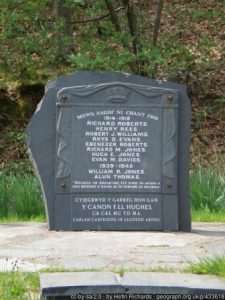
The Great War, 1914-1918
Evan Morris Davies, Private, 57795, Machine Gun Corps. Evan was the son of Lewis and Mary Davies, of Aberllefenni. He married Martha Jones in 1912, and the couple lived at Aberllefenni, Corris. Evan enlisted into the Royal Welsh Fusiliers at some time in 1915, and after completing his training became a specialist machine-gunner, being posted to the 89th Company, Machine Gun Corps. The Company was in France attached to 89 Brigade, 30th Division and had been in France since November 1915. The Division took part in its first major action during the Somme Offensive, at the Battle of Albert, where it captured Montauban. It then fought during the latter stages of the offensive, during the Battle of Le Transloy, before wintering on the Somme. In March 1917 the Division followed the German Retreat to the Hindenburg Line, and in April took part in the First Battle of the Scarpe, and then at the later Second Battle of the Scarpe. Later that year the Division was moved north to Ypres, and fought at the Battle of Pilckem Ridge. Over the sinter the Division was stationed near St. Quentin, in the southern Somme sector. Evan took ill just after Christmas 1917, and died of lobar pneumonia on 14 January 1918, aged 29. He is buried in Cerisy-Gailly Military Cemetery, France.
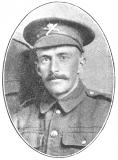
Rhys Daniel Evans, Private, 67570, Cheshire Regiment. Rhys was the son of Peter and Sarah Evans, of Pensarn, Aberllefenni, Corris. He was living in Ynyshir at the outbreak of war, but returned home to enlist at Dolgellau into the army. After completing his training, Rhys was posted to France early in 1918, joining the 15th Battalion, Cheshire Regiment, which was attached to 105 Brigade, 35th Division. The Division had been in France since the beginning of 1916 and had fought on the Somme, but it had been withdrawn from the line and rebuilt before moving back into the line, and following the German withdrawal to the Hindenburg Line in March 1917. The Division then moved north to Ypres, and fought at the Second Battle of Passchendaele. The Division was in the Ypres Salient when the Germans launched their Spring offensive along the front from Croisilles to La Fère on 21 March 1918, and was rushed down to the Somme battle area, and detrained at Mericourt-L’Abbe. The Division then relieved the battered front-line troops at Maricourt on 24 March, and almost immediately came into contact with the enemy. By the time the 15th Cheshire’s had been relieved by the Australians on 31 March, it had suffered over 300 casualties. Rhys probably joined the battalion after this, while it was in reserve at La Houssoye. The Division then moved to the line north of Albert for a short while, taking up positions alongside the 38th (Welsh) Division. On 16 June the 35th Division was relieved by the 12th Division and moved into reserve, before beginning the move north back to the Ypres Salient. The Division then relieved a French Division in the Locre Sector. The 15th Cheshire’s were at Locre on 19 July 1918 when Rhys was killed by German artillery fire. The 19-year-old is buried in Abeele Aerodrome Military Cemetery, Belgium.
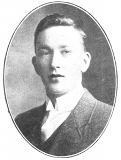
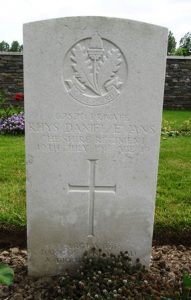
Hugh Edward Jones, Private, M2/133360, Royal Army Service Corps. Hugh was born in 1890, the son of John and Jane Jones, of 51, Garneddwen, Corris. The family later resided at Cwmhafod, Aberhosan. Hugh worked as a farm labourer prior to the war. He enlisted at Wrexham into the Royal Army Service Corps, and upon completing his training, was posted to France, joining the 75th Siege Battery Ammunition Column. The battery was attached to the South Africans, and saw extensive service on the Somme in 1916, following its arrival on the Western Front, having joined the 9th (Scottish) Division. In 1917 the Division took part in the Battle of Arras and in the Third Battle of Ypres. When the Germans launched their Spring offensive on 21 March 1918, the South Africans fought a famous defence at Gauche Wood, near Villers Guislain. The Division then moved to Flanders to rebuild, but became caught up in the second phase of the German offensive, on the Lys, from 9 April. The Division remained in Flanders over the coming months prior to the launching of the great Allied offensive on 21 August 1918, then took part in the advance in Flanders. Hugh was killed in action just afterwards, on 8 September 1918, aged 27. He is buried in Feuchy Chapel British Cemetery, Wancourt, France. His brother, William Rowland Jones, was awarded the Military Medal in 1918 for rescuing a wounded man while under heavy shellfire.
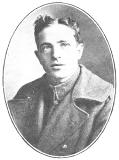
Richard Meyrick Jones, Private, 75630, Royal Welsh Fusiliers. Richard was the son of John and Gwen Jones, of 57, Garneddwen, Corris. He enlisted into the Royal Welsh Fusiliers, and after completing his training was posted to the 11th Battalion, Royal Welsh Fusiliers, which was in Salonika attached to 67 Brigade, 22nd Division. The British and French had sent a strong force out to Salonika following the defeat of their ally, Serbia, by a combined Australian, German and Bulgarian invasion. The Serbs had retreated into Greece as their country fell, so the Greek forces holding the Salonika front bolstered by the arrival of these British and French Divisions. Richard was killed in action in Salonika on 28 June 1918, aged 21. He is buried in Karasouli Military Cemetery, Greece.
Henry Rees, Private, 15515, Royal Welsh Fusiliers. Henry was the son of John and Jane Rees, of 4 Ratgoed Cottage, Aberllefenni, Corris. He worked as a labourer prior to the war. Henry enlisted at Machynlleth into the 14th Battalion, Royal Welsh Fusiliers soon after the outbreak of war. The battalion was raised at Llandudno by the Welsh National Executive Committee, joining 128 Brigade, 43rd (Welsh) Division and trained in North Wales before moving to Winchester in the summer of 1915, where the formation became renumbered 113 Brigade, 38th (Welsh) Division. The Division moved to France on 2 December 1915 and moved to the Nursery Sector near Fleurbaix for trench initiation alongside the Guards Division. The Division then held a sector of the line near Cuinchy before marching south to the Somme sector in June 1916 to take part in the assault on Mametz Wood. The first attack on the wood was launched on a two-battalion front on 7 July, but failed, and the Divisional Commander, Sir Ivor Philipps, was replaced before the Division attacked again on a two Brigade front on 10 July 1916. After two days of ferocious hand-to-hand fighting, the wood was cleared up to its northern edge, before the battered Division was relieved. It then took over a section of the front at Hébuterne before moving to the Ypres Salient, and taking over the Canal Bank sector at Boesinghe. The infantry battalions of the Division then began carrying out the normal pattern of rotation in the trenches, four days in the front, four in support and four in reserve, whilst also working on trench improvement, digging new trenches, and also carrying out regular patrols and trench raids. On 30 October the 14th RWF relieved the 13th RWF in the front line on the Canal Bank to begin a routine spell in the trenches. On the following day, 31 October 1916, Henry was with a working party in the trench, constructing new dugouts, when a German artillery shell crashed into the party, killing him and one other man. Henry was 32-years-old when he was killed that day and is buried in Essex Farm Cemetery, Belgium.
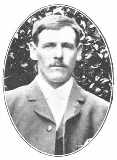
Ebenezer Roberts, Private, 3058, Welsh Guards. Ebenezer was the son of David and Catherine Roberts, of 31, Pensarn, Aberllefenni. He worked as a farm labourer prior to the war. Ebenezer enlisted into the Welsh Guards and was posted to France in 1916, joining the 1st Battalion, Welsh Guards, which was attached to the 3rd Guards Brigade, Guards Division. In July 1916 the Division moved to the Somme, where they fought at the Battle of Flers-Courcelette, and then at the Battle of Morval, capturing Lesboeufs Village. The Division remained here for the winter, and in March 1917 took part in the advance caused by the German Retreat to the Hindenburg Line. Later that year the Division moved north to Ypres, taking part in the opening offensive of the Third Battle of Ypres, at the Battle of the Pilckem Ridge. The Guards saw further action at Ypres before being moved south and took part in the Battle of Cambrai, seeing heavy fighting during the German counter-attack. The Guards remained in the area over the final winter of the war, and were stationed near Gouzeaucourt when the German Spring Offensive hit the area on 21 March 1918. The Welsh Guards were put on standby at Mercatel, on 1/2 hours’ notice to leave, before taking up positions behind Boyelles at Boisleux-St. Marc, and over the coming days suffered sporadic spells of shell-fire. Fortunately, the main attack was taking place along the front to the south, so the Welsh Guards escaped the massive casualties that other units had suffered throughout this time. The Guards Division then moved to the Douchy Les-Ayette sector, and spent most of May there before moving out of the line to Barly in June, then during July moved back into the line at Boyelles. To the south, a combined British, Australian and Canadian offensive at Villers-Bretonneux on 8 August 1918 broke German spirit, and on 21 August a massive offensive was launched by the Allies along the Western Front. The 1st Welsh Guards were ordered into the fight on 23 August, and moved into its assembly area that afternoon. As part of the forthcoming attack by the Guards Division, the Welsh Guards were given the objective of the ridge at St. Leger. The attack was a success, and the Guardsmen dug in and consolidated their gains during the evening of the 24th. On the following day the Welsh Guards continued their advance, but upon reaching the railway embankment found the wire to be uncut, so further attacks were called off. Ebenezer had been wounded during the fighting for St. Leger, and died of his wounds on 26 August 1918, aged 21. He is buried in St. Hilaire Cemetery Extension, Frevent, France.
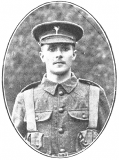
Richard Roberts, Private, 13478, Royal Welsh Fusiliers. Richard was the son of Richard and Mary Roberts, of Tal-y-Llyn. He lodged at Aberllefenni prior to the war, and worked as a Quarryman. Richard enlisted at Bridgend into the 8th Battalion, Royal Welsh Fusiliers soon after the outbreak of war. The battalion formed at Wrexham before moving to Salisbury Plain to join 40 Brigade, 13th (Western) Division. Towards the end of February, the entire Division concentrated at Blackdown in Hampshire. On 7 June 1915 orders were received to prepare to move to the Mediterranean and on 13 June 1915 the Division sailed for Alexandria. The Division then moved to Mudros before being landed at Cape Helles, Gallipoli from 6 July 1915, relieving the 29th Division. The Division then left and returned to Mudros at the end of the month, before being landed at Anzac Cove from 3 August 1915, to fight alongside the Anzacs in the forthcoming offensive. The 13th Division then took part in heavy fighting during the Battles of Sari Bair, Russell’s Top, and at Hill 60 over the coming days. Richard was wounded at Anzac, and was evacuated by Hospital Ship, but died of his wounds at sea on 21 August 1915. The body of the 34-year-old was brought ashore and he was buried in East Mudros Military Cemetery, Greece.
Robert John Williams, Private, 291579, Royal Welsh Fusiliers. Robert was the son of Evan Owen and Mary Ellen Williams, of Aberllefenni Farm, Aberllefenni. He worked as a Rockman prior to the war. Robert enlisted at Dolgellau into the 7th Battalion, Royal Welsh Fusiliers on 19 February 1916, and was posted to Park Hall, Oswestry for training. He was then posted to France, embarking at Southampton on 23 May 1917, and joined the 15th Battalion, Royal Welsh Fusiliers, which was attached to 113 Brigade, 38th (Welsh) Division, at Ypres on 17 June. The Division was preparing to launch its assault on the Pilckem Ridge, as part of the opening assault of the Third Battle of Ypres. The Division launched its assault at 03.50 on 31 July 1917, and after a day of brutal fighting had attained its objectives, capturing the position known as Iron Cross and reaching the Steenbeek. The 15th RWF, which had lost most of its officers, consolidated its positions on Iron Cross and held on over the following day, in heavy rain. The battered battalion moved to posts on the Steenbeek on 2 August and remained there until its relief on 5 August. Robert had been posted as missing, believed killed, at some time between the launching of the assault on 31 July and 4 August 1917. His death was finally recoded to have taken place on 4 August 1917. The 27-year-old has no known grave and is commemorated on the Ypres (Menin Gate) Memorial, Belgium.
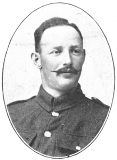
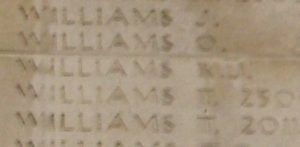
World War Two, 1939-1945
William Richard Jones, Gunner, 4201851, Royal Artillery. William was the son of Maldwyn Jones and Elizabeth Ann Jones (nee Edwards), of Aberllefenni. He enlisted into the Royal Artillery and was posted to 55 (The West Somerset Yeomanry) Field Regiment, Royal Artillery. The regiment spent much of the war on home service whilst preparing for the Normandy invasion. William died whilst on active service near Grantham, Lincolnshire on 25 April 1944, less than three months prior to D-Day. His remains were brought home for burial in Tal-y-Llyn Cemetery, near Corris.
Alun Thomas, Private, 4201544, Welch Regiment. Alun was born on 13 December 1915, the son of Mr. and Mrs. William Thomas, of Corris. He enlisted into the army, and was posted to Sheringham, Norfolk, where he married Joan Elizabeth Knowles in 1943. Soon after his marriage, Alun was posted out to Palestine to join the 1st Battalion, Welch Regiment, which was refitting prior to taking part in Operation Husky, the invasion of Sicily. The 1st Welch landed on Sicily on 9 July 1943, and carried out beach duties. The battalion then crossed the Messina Straits in Landing Craft to take part in the invasion of mainland Italy, landing on 3 September 1943, and again carried out beach duties before being rushed back to Egypt to quell a revolt by Greek troops stationed in Alexandria. In May 1944 the 1st Welch was sent back to Italy, to fight as infantry again, to take part in the attack on the Gothic Line. On 6 September the 1st Welch supported an attack by the 7th Armoured Brigade on Croce, and after six days of intense fighting, helped capture the village. Alun was killed during the fighting for Croce, on 11 September 1944, aged 28. He is buried in Coriano Ridge War Cemetery, Italy.